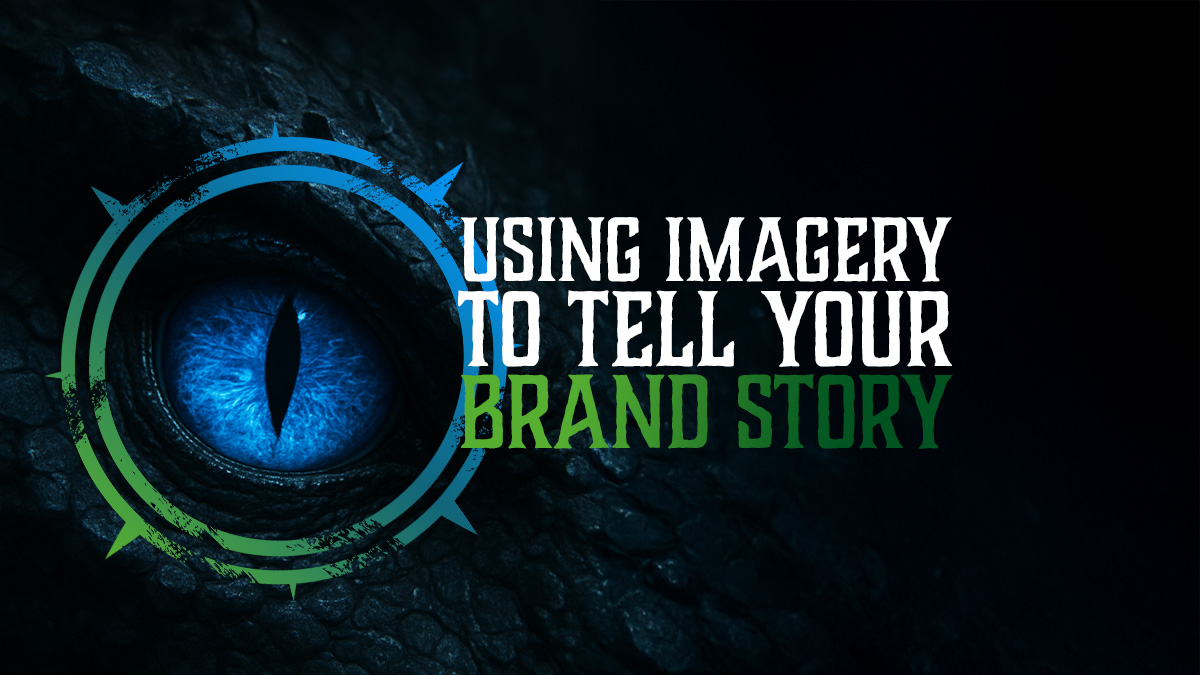Storytelling is the spark that brings your brand to life. While clever taglines and pretty visuals attract attention, the real connective tissue of your brand is the stories you weave. These are more than fantastic tales or epic sagas; they’re the best tools for building an emotional connection with your audience.
The problem is, small businesses often suck at telling them, and certainly fail to show them visually.
You all know the saying, ‘ a picture is worth a thousand words’. Visual communication is one of the fastest ways to get a complex message across. But that also means it’s tricky to get right. And if your visuals aren’t building on your brand story, they’re actively detracting from it.
Imagery is the cornerstone of effective branding, and hitting the right tone is vital. Visuals convey emotion, identity and embed memories easier and faster than words alone.
Getting it right can make or break your connection with your clients.
The Power of Brand Imagery
Images talk to us before words even get a chance to put their trousers on. Visuals have the power to create and activate emotions, connecting at a deeper level. When used in branding, they can subtly create an impression and influence perception. While words can do this, images do it faster and often with wider appeal.
Unlike words, images don’t need to be translated. They don’t cater to specific reading levels or dialects. Two people from opposite parts of the world can see an image and feel something similar. There is a universality to images that words don’t quite reach.
This means images have a distinct advantage in emotional connection, which is crucial for your brand. They can build complex emotional stories in moments, creating feelings that you want to associate with your brand.
Stories work best when the audience feels them. Images tap into emotions instantly, evoking joy, hope (and even fear) to make a story more memorable and relatable. Actually seeing a hero succeed is more powerful and has greater resonance than merely reading about it.
Symbology can build this story (using something called semiotics), using culturally recognised symbols as shorthand for complex ideas. Fantasy creatures are good examples of this; a phoenix creates an idea of renewal, while a griffon has a regal sense of power.
Beyond emotional connection, visuals also aid recall, making your story easier to remember. People remember images more than words, so the visuals you use create anchors that help your audience recall your brand narrative. Consistent visual design (including colour, shape and tone) helps your brand linger in your customer’s minds. A strong logo acts like a talisman, condensing trust and emotional meaning into a powerful symbol. The visual memory a brand creates is crucial to recognition.
Elements of Effective Brand Imagery
Reaching a stage of recognition is the aim of most business owners. Emotional connection and visual memory are highly desirable outcomes, but how can imagery reach them?
Several elements make effective brand imagery, especially when it comes to storytelling. Here are the three most important:
Consistency
Stories can lose impact in retelling. If you’ve ever heard someone try to recall an event second-hand, you’ll notice the facts can be influenced by their biases and perspective. Even memory can skew events. What do you think happens when someone tries to recall what they’ve read about you? That message goes through the mangle and comes out different each time.
Consistency is a vital element of effective brand imagery. Consistent styles, colours, motifs and typography ensure a cohesive brand story to whoever sees it.
Authenticity
Audiences can spot bullshit quickly. Even if they can’t put their finger on exactly what’s wrong, they’ll feel a sense of unease when presented with lies. This is especially true in storytelling, where weaving a narrative requires multiple facts to line up.
This means if your visuals don’t align with your purpose, values and vision, people will notice. Using what you think the audience wants to see, rather than what’s honest, can lead to massive disappointment. Genuine visuals reinforce your narrative instead of undermining it.
Relevance
The greatest stories resonate with the audience. Even a beautifully crafted narrative will fall flat if the audience can’t empathise or connect with it. Making your visuals feel like part of their journey creates an immediate emotional connection.
Choose images that reflect their world. Their aspirations and challenges. Doing this shows you understand them and that you are part of their journey. But remember to keep it authentic to your identity too!
Brand Imagery tools for storytelling
Now you know what brand imagery can do for your storytelling, how can you implement it? Fortunately, there are loads of ways to start telling visual stories in your brand!
So many, in fact, it can be difficult to know where to begin.
That’s alright, there’s not really a wrong answer. But here are some I find work particularly well.
Photography
Branded photography is a great tool for telling stories. Using high-quality images that represent the brand and its products is a quick way of getting your message across. Photography can give an insight into how you work, creating a direct link between your team and your clients.
High-quality photography helps to ground your brand story in reality. Showing your team and process makes your narrative human and relatable. This creates fast connections and helps foster initial trust in a business.
While more authentic photography creates an honest connection, abstract imagery can build an emotional foundation. Using images that reflect the core emotions of your brand identity can quickly help people gauge the overall tone of your brand story.
Take the two example images below. While both are of nature, the misty pines in the first image create a sense of mystery and adventure, while the sunny beach feels light and relaxing. Using the right photography can have a huge impact on how your brand feels.

These two images are both of ‘nature’, but have distinctly different tones.
Illustration
Illustrations add creativity and uniqueness to your brand story, making them ideal to express metaphor and personality. Illustrated symbols help elevate a brand’s character, providing a sense of how your story is unique.
There are as many uses for illustration as there are styles, so when it comes to your brand’s story, you want the right match. A cute character mascot works well for a kid’s brand, while a more jagged, graffiti style would be more appropriate for an extreme sports brand. The style of illustration can say as much about the brand as the subject.

These two illustrations both feature tigers, but the styles mark them out for different uses.
Illustrations are fantastic for adding metaphor to your brand story, providing a more abstract or fantasy appeal. Illustrations also allow you to express ideas symbolically. This is especially useful in icons, which can be used to portray complex subjects and ideas quickly.
Infographics
Infographics contain more of your story than you think. The data they show is often crucial in providing proof for your audience, and evidence is vital to drive sales. However, providing long lists of facts and figures is, frankly, rubbish for your message, story and marketing.
That’s why infographics are so powerful. They show your data in a more engaging fashion.
Infographics distil your message into visual narratives, providing clarity. By making data clear, it becomes an important part of your brand narrative, both engaging and structured.
Infographics are also an easily shareable format, especially on social media. This makes them excellent content that can spread your story further.
Crafting Your Brand’s Visual Story
So, how can you use these tools and elements effectively? Creating a plan and structure for the type of visuals your brand uses is vital to entwining them seamlessly into your story. Like anything in branding, it’s no good to throw things together just because they ‘look cool’. You might get some attention, but you won’t be remembered.
Start by identifying your brand narrative. Every story has a theme, and if you don’t know yours, how can you find imagery to match? Define your brand’s purpose and promise to form the narrative spine for your visuals. It’s easier to choose resonating imagery if you know what your brand promises. If you promise transformation, you should use visuals that reflect change. If you promise safety, you should choose images that make people feel secure.
Once identified, you can use this visual language to choose imagery that matches your core ideals. Symbols, colour and style all act as your brand’s vocabulary, so choose them with intention. If your brand identity is warm and welcoming, use yellows to create that impression. If you want an authentic appeal, using hand-drawn and ‘sketchy’ illustrations can help.
Finally, ensure your visuals can be integrated across all your platforms. It’s no good if a visitor sees a different visual language between your socials and website. This will break the narrative flow and cause them to seek help elsewhere. Stories gain power through repetition, so ensure every touchpoint provides a consistent look and feel. Print, web, social, and merchandise should all build a consistent experience, so you feel familiar to your audience.
Conclusion – How to use imagery to tell your brand’s story
Brand imagery isn’t just there to make your website look pretty. It plays a vital role in telling your brand’s story. A clear narrative coupled with strong, resonant imagery creates an emotional pull. This is a powerful point of distinction for any brand. Being the brand that people WANT to work with is always positive.
Choosing consistent, authentic and relevant visuals transforms your brand into something people believe in. They are invited into the story, rather than told to sit and watch. This connection is invaluable, especially as automation and AI become more prevalent. A story that feels trustworthy and whole creates a more engaged audience.
Your choice of imagery is important. It has the power to connect emotionally, enhance recall and swiftly convey identity. All of this is vital to a brand’s long-term success.
Just throwing some cool images around won’t cut it.
People need to feel your story in your visuals.
Current visuals more ‘meh’ than mesmerising? Maybe it’s time to go back to basics. Book a chat here and we’ll explore how to make your brand story more captivating.






